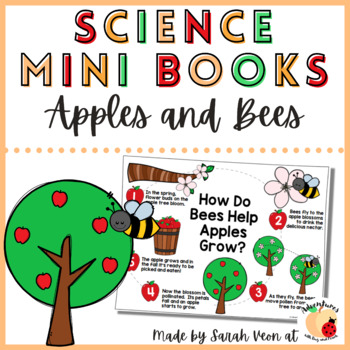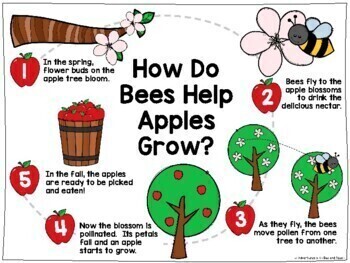Science Mini Books - Apples and Bees Pollination Cycle
Adventures with Bug and Peach
349 Followers
Grade Levels
PreK - 1st, Homeschool
Subjects
Resource Type
Standards
CCSSRF.K.1a
CCSSRF.K.3c
CCSSRF.K.4
NGSSK-ESS3-1
Formats Included
- PDF
Pages
21 pages
Adventures with Bug and Peach
349 Followers
What educators are saying
My students loved these little books during our apple week activities. We spent some time learning about bees and pollination and this was a great resource to reinforce what we learned.
Also included in
- This growing bundle is full of science lessons, activities, and resources to get your kids excited about the world around them. With subjects such as animals, trees, weather, and outer space, there's something to enjoy in every season! These emergent readers are perfect for fostering a love of leaPrice $27.16Original Price $33.95Save $6.79
Description
How do bees help apples grow? Use these mini books and posters to teach the important relationship between apples and bees. Pair this activity with books or a field trip to the apple orchard!
What's included:
There are 4 skill options for the mini books:
- "How Do Bees Help Apples Grow?" cycle poster - color, cut and paste
- Mini Book - Coloring only
- Mini Book - Color, cut, paste, and trace
- Flip Book - easy sight word reader: I, do, to, see, the, what
Check out the companion mini book, "How Do Bees Make Honey?" or see the bundled resource here!
To see the full Christian education unit, click here!
To make sure you never miss a new resource, follow me at Adventures with Bug and Peach
Find me on social media to see more preschool resources in action!
Total Pages
21 pages
Answer Key
N/A
Teaching Duration
N/A
Report this resource to TPT
Reported resources will be reviewed by our team. Report this resource to let us know if this resource violates TPT’s content guidelines.
Standards
to see state-specific standards (only available in the US).
CCSSRF.K.1a
Follow words from left to right, top to bottom, and page by page.
CCSSRF.K.3c
Read common high-frequency words by sight (e.g., the, of, to, you, she, my, is, are, do, does).
CCSSRF.K.4
Read emergent-reader texts with purpose and understanding.
NGSSK-ESS3-1
Use a model to represent the relationship between the needs of different plants or animals (including humans) and the places they live. Examples of relationships could include that deer eat buds and leaves, therefore, they usually live in forested areas; and, grasses need sunlight so they often grow in meadows. Plants, animals, and their surroundings make up a system.






